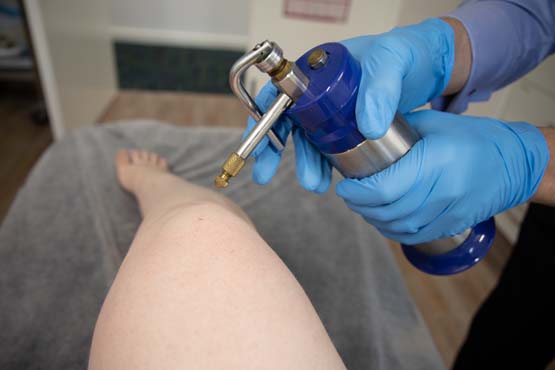
Warts can be stubborn, unsightly, and sometimes painful skin growths that affect millions worldwide. If you’re wondering how effective is cryotherapy for warts?, you’ve come to the right place. Cryotherapy offers a fast, reliable, and minimally invasive solution for wart removal, making it a preferred choice for many patients and dermatologists alike.
In this article, we’ll explore why cryotherapy stands out as the best treatment for warts, what the procedure involves, its benefits, and what to expect after treatment. Whether you’re dealing with common warts, plantar warts, or other types, understanding cryotherapy can help you make an informed decision for fast relief.
What Are Warts and Why Do They Need Treatment?
Warts are benign skin growths caused by the human papillomavirus (HPV). Though harmless in most cases, warts can cause discomfort, embarrassment, or interfere with daily activities depending on their size and location. Left untreated, they may spread or multiply.
Treatment is often sought not only for cosmetic reasons but also for relief from pain or irritation. This is where cryotherapy comes into the picture as an effective and widely used option.
What Is Cryotherapy for Warts?
Cryotherapy is a medical procedure that involves freezing the wart tissue using extremely cold substances like liquid nitrogen. The freezing causes the wart cells to die and eventually fall off, promoting new, healthy skin growth in their place.
This treatment is quick, usually performed in a dermatologist’s office, and requires no anesthesia. But the most common question remains: how effective is cryotherapy for warts?
How Effective Is Cryotherapy for Warts?
Cryotherapy is considered one of the most effective treatments for warts, with success rates ranging from 60% to 90% depending on the wart type and location. Multiple treatment sessions may be needed, but many patients notice significant improvement after just one or two visits.
The effectiveness of cryotherapy stems from its ability to destroy the wart tissue completely and stimulate the body’s immune response to fight the HPV infection. It’s especially effective on common and plantar warts, which are often more resistant to topical treatments.
The Cryotherapy Process: What to Expect
Understanding the treatment process helps reduce anxiety and sets clear expectations:
1. Initial Consultation
Your dermatologist will examine the wart(s) and discuss your medical history. They’ll confirm that cryotherapy is suitable for your specific case.
2. Application of Liquid Nitrogen
Using a spray device or cotton swab, the doctor applies liquid nitrogen directly to the wart. The extreme cold freezes the tissue, often causing a burning or stinging sensation lasting a few seconds.
3. Formation of a Blister
After freezing, a blister may form around the wart, which is a normal part of the healing process. This blister eventually dries, and the wart tissue falls off within days to weeks.
4. Follow-Up Sessions
Depending on the wart’s size and response, additional cryotherapy sessions may be scheduled every 1-3 weeks until the wart disappears.
Benefits of Choosing Cryotherapy for Wart Removal
Cryotherapy offers several advantages that make it a top choice:
Fast and Minimally Invasive
Unlike surgical removal, cryotherapy requires no incisions or stitches, leading to quicker recovery and less discomfort.
Suitable for Various Warts
It works effectively on many wart types, including common warts, plantar warts, flat warts, and genital warts.
Stimulates Immune Response
The freezing process not only destroys the wart but also boosts your immune system’s ability to fight the HPV virus, reducing the chance of recurrence.
Outpatient Procedure
Cryotherapy is done in-office, often taking just a few minutes, allowing you to return to your routine immediately.
Post-Treatment Care and What to Expect
After cryotherapy, proper care can enhance healing and prevent infection:
-
Keep the area clean and dry: Avoid soaking the treated spot in water for prolonged periods.
-
Avoid picking at blisters: Let the blister naturally fall off to prevent scarring.
-
Use over-the-counter pain relief: If you experience discomfort or swelling, NSAIDs like ibuprofen can help.
-
Protect the area: Cover with a bandage if necessary, especially if the blister bursts.
Most patients heal within 1 to 3 weeks post-treatment. If the wart does not respond or recurs, consult your dermatologist for alternative options.
Common Questions About Cryotherapy for Warts
Does Cryotherapy Hurt?
You may feel brief discomfort, burning, or stinging during the procedure. Post-treatment soreness can last a few days but is generally manageable with simple pain relief.
How Many Treatments Are Needed?
The number varies by wart size and type, but typically 1-4 sessions are sufficient for full removal.
Are There Any Side Effects?
Possible side effects include temporary redness, blistering, and mild scarring. Serious complications are rare when performed by a professional.
Why Cryotherapy Beats Other Wart Treatments
While there are other options like topical acids, laser therapy, or surgical removal, cryotherapy combines effectiveness, speed, and minimal downtime, which is hard to match. Unlike topical treatments that require weeks of daily application, cryotherapy offers fast results with fewer visits.
Laser treatments can be costly and more invasive, while surgery carries risks of scarring and longer recovery. Cryotherapy’s balance of safety and efficacy makes it the best option for many patients.
Final Thoughts: Fast Relief with Proven Results
If you’ve been asking how effective is cryotherapy for warts?, the answer is clear — it’s a highly effective, safe, and fast treatment option that can rid you of warts with minimal discomfort. With proper post-care and follow-up, cryotherapy can help you regain smooth, healthy skin quickly.
Don’t let warts hold you back any longer. Consult a qualified dermatologist today to see if cryotherapy is the right solution for your wart concerns and enjoy fast relief with lasting results.